Finding an ideal client or customer is one thing, making them come to you is a different game altogether.
In the first case, you have to go from person to person and explain to them about your products and encourage them to buy from you.
In the second scenario, you simply put yourself out there, maintain authority, position yourself as a leader in your industry, and boom!
Your customers find you and make a purchase or reach out to you for services.
The second one is what SEO does for small businesses. It helps you rank on SERP (Search Engine Results Page)which turns into more traffic ultimately paving the path for higher leads and sales.
The question is, how do you get SEO to work for your small business? Is it the same as SEO for big and enterprise-level businesses or are their specific rules applied to small businesses?
That’s exactly why we have created this blog. We will be covering every detail regarding SEO for small businesses.
What is SEO and How Does It Work?
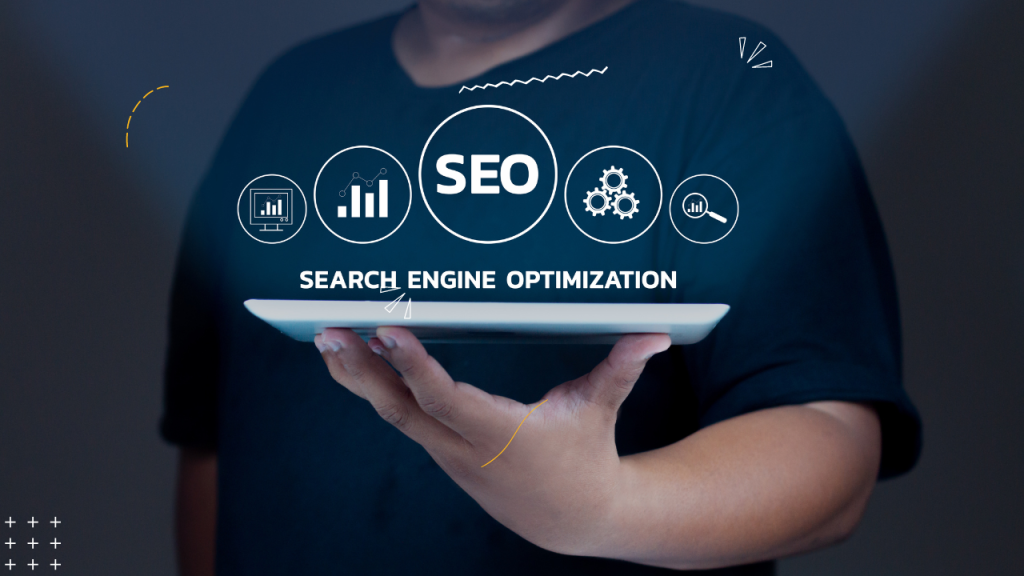
Before you understand what small business SEO is, you need to understand what SEO is and how it works.
SEO is a set of strategies or practices on and for websites that help them rank higher on SERP (Search Engine Results Page).
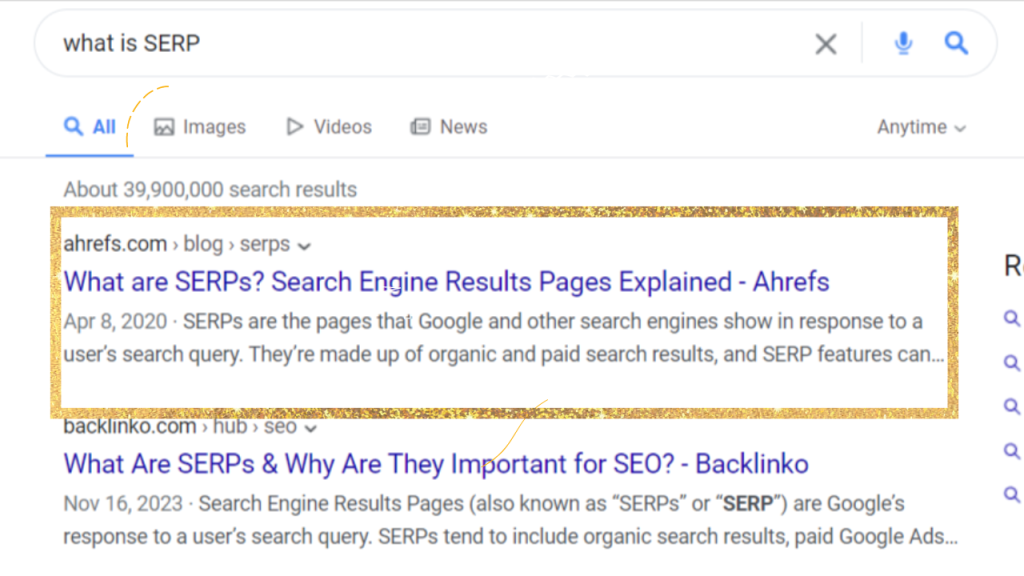
Why do you need SEO to rank on SERP?
It’s because, to display the best results for a user query, Google has a specific algorithm. These algorithms crawl through web pages to find relevant content that matches the search query intent.
In order to display your website on top Google’s crawler must recognize your website content as relevant, informative, trustworthy, and authoritative. You can only achieve that with the right SEO strategies.
What is SEO For Small Business?
Small Business SEO is the practices small businesses can implement to get a higher ranking on Google SERP. These strategies when implemented correctly give your small business website the spotlight for SERP results for the target audience’s queries.
SEO is crucial for small businesses irrespective of the industry they are in and the competition they face. It helps businesses gain visibility, drive traffic, and increase conversions.
Note that SEO strategies for small businesses come under the general SEO strategies only with a certain specific approach that accommodates limited resources.
The Biggest Myth: “SEO Is Only For Large Companies”
One of the biggest myths small business owners believe in is either they cannot afford to invest in SEO or SEO doesn’t do any good for small businesses.
The truth is, SEO is for businesses of all sizes and yes, it is affordable. Most businesses believe this myth because they are implementing wrong strategies that cost way more than their revenue but don’t drive results.
For example, if you are a Local baker, investing in a high-cost backlink building strategy will cost you around $1,000 a month but, it’s not a strategy small businesses should spend dollars on. Instead, you can simply focus on content marketing and Local SEO to drive the same result or even more.
Do you see, the culprit here is the way you use SEO strategies and not SEO itself?
Instead of using a cookie-cutter solution the SEO strategies should be built or customized after analyzing a company’s budget, scope, goals, etc. of the company.
What is the difference in SEO Strategy for Small Businesses and Big Enterprises?
As we mentioned earlier, businesses believe in myths because they implement the same SEO strategies that enterprises incorporate. To have the best strategies for small businesses it’s important to understand how they are different.
The major difference between small business SEO and enterprise SEO boils down to the resources available and the budget for marketing. But, if you think you cannot rank with limited resources, you can’t be more wrong.
Since enterprises sell high-ticket services or products and target larger audiences they need many more resources. On the other hand, small businesses can get results by sparing one-fourth of their budget.
For example, Enterprises often invest in link-building campaigns, including paid placements on authoritative websites, sponsoring events, and expensive outreach programs.
The estimated budget allocated by the enterprise for link building varies anywhere from $10,000 to $100,000 or more per month. Why?
It’s because enterprises need at least 100-200 backlinks on each content to outrank their competitors since they mostly target high-competition keywords.
Yet, as small businesses you can start with targeting low-competition keywords and would hardly need 40-60 backlinks.
The best part you don’t have to allocate thousands of dollars to get these backlinks.
You can simply focus on organic link-building, collaborating with local businesses or influencers, participating in industry forums, and creating shareable content that naturally attracts backlinks. This grassroots approach can be more cost-effective while still improving search rankings.
In a nutshell, the strategies enterprises use and budget are generally not required for small businesses. A proper small business SEO strategy outlines the steps to take, actions to avoid, and practices that are not necessary.
Small Business SEO vs. Local SEO
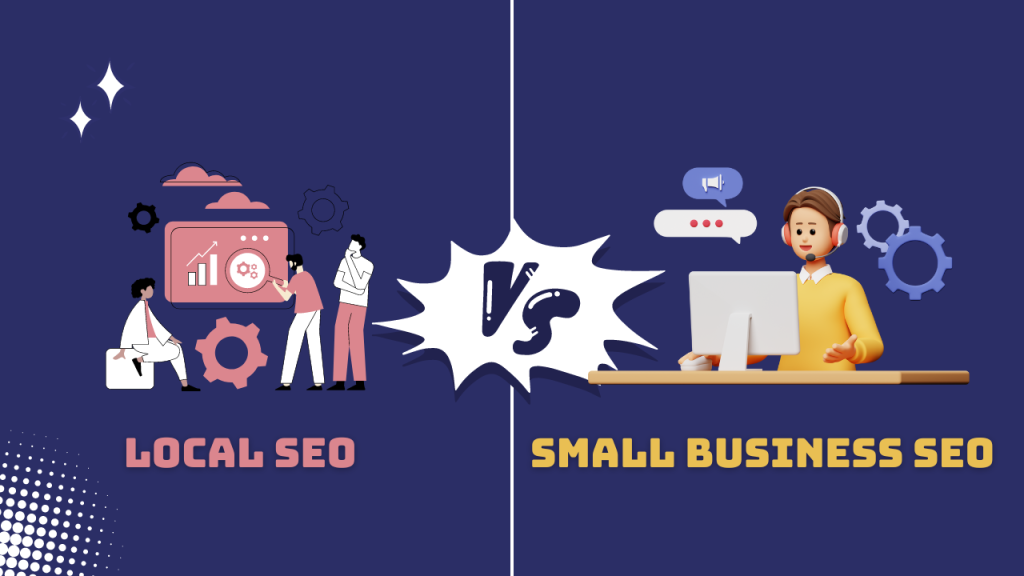
The primary difference between SEO and Local SEO lies in which search results you want your site to show up. Local SEO, in general, optimizes the pages of your websites for region-specific results.
For example, if you are a Bakery shop owner in New York, you would want your business to show up when someone in New York searches for Bakery shops ‘near me’.
Local SEO helps you with targeting customers in a particular location, preferably places near your physical business address. Hence, like on-page SEO and off-page SEO, local SEO is a part of complete small-business SEO.
Benefits of SEO for Small Business
Growing website traffic
SEO helps you get out in the online world making your website more visible on search engine result pages (SERPs). This increased visibility improves the chances of potential customers finding your site when searching for related keywords.
Here’s an example of Miami Luxury Homes, a real estate company driving immense traffic through proper SEO strategies.
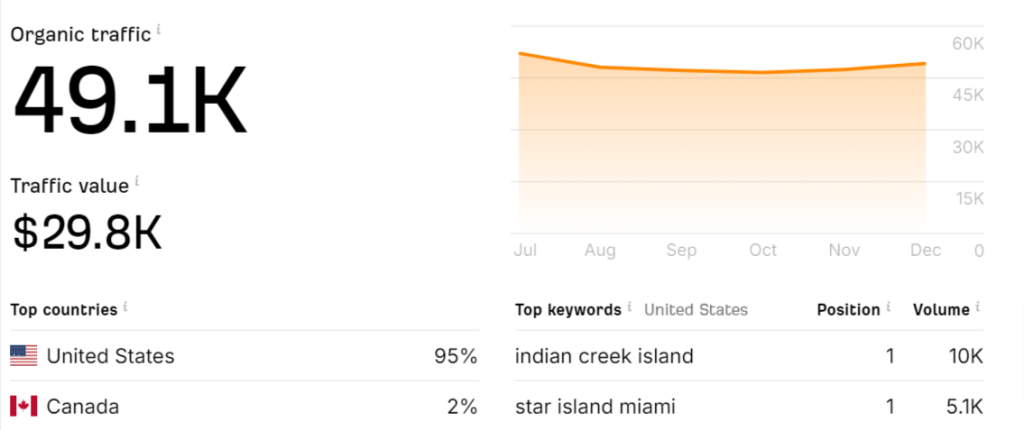
Miami Luxury Homes, by Michael Light, a Miami-based Realtor, ranks on page 1 of Google for keywords related to luxury projects in Miami.
It ranks for keywords like Aston Martin Residences, Missoni Baia, Elysee, and Una Residences, with a monthly visit between 100,000 to 150,000.
Imagine the number of leads they get from this much monthly traffic. Terrific right?
Well, with the right approach to SEO, you can do that too!
Improved brand awareness
Let’s say you want some fashion advice on “ how to style a coat” The website that pops up on the top is Vogue. Next time you search for let’s say “best fashion advice for men in 2024” the same website pops up.
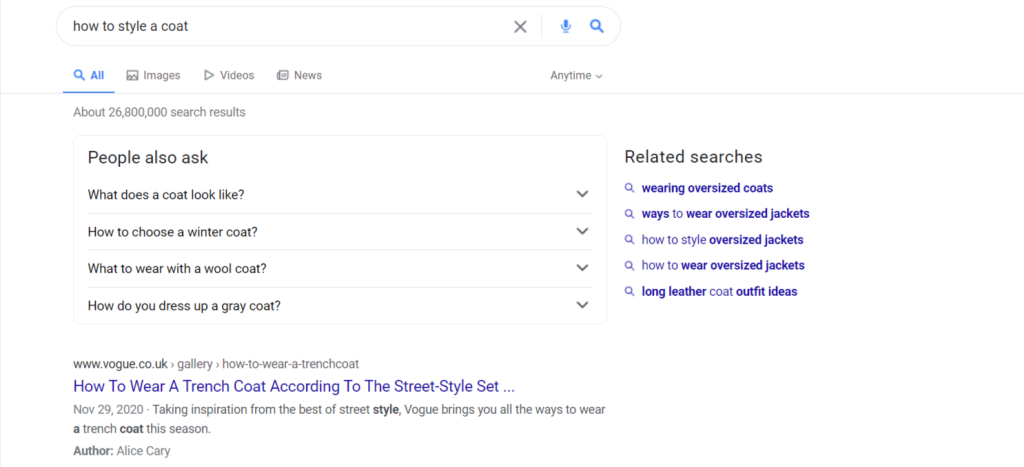
If you have a fashion dilemma for the third time, whom would you turn to directly? Vogue right?
SEO operates similarly across various industries, be it fashion or small businesses like yours. When you implement effective SEO strategies, your website begins to surface in relevant searches.
Gradually, your brand gains visibility, becoming a go-to resource for valuable information in your industry. With an SEO-optimized website, you position your business as a trusted authority within your niche, someone customers rely on for reliable and accurate information.
The more frequently your business appears in search results related to your industry, the more it embeds itself in the minds of potential customers. When they require a product or service you offer, your brand becomes the first one they think of.
Targeted audience
In PPC advertising you specify geographic area and mention criteria. Your ads reach individuals who fit certain criteria, but there’s no guarantee that these viewers are genuinely interested in your offerings.
Recent reports reveal that only a small percentage of people who see these targeted ads, show genuine interest or engagement.
Here’s an analysis of the average CTRs of each of the first 8 search results that a user encounters upon typing a query into Google Search.
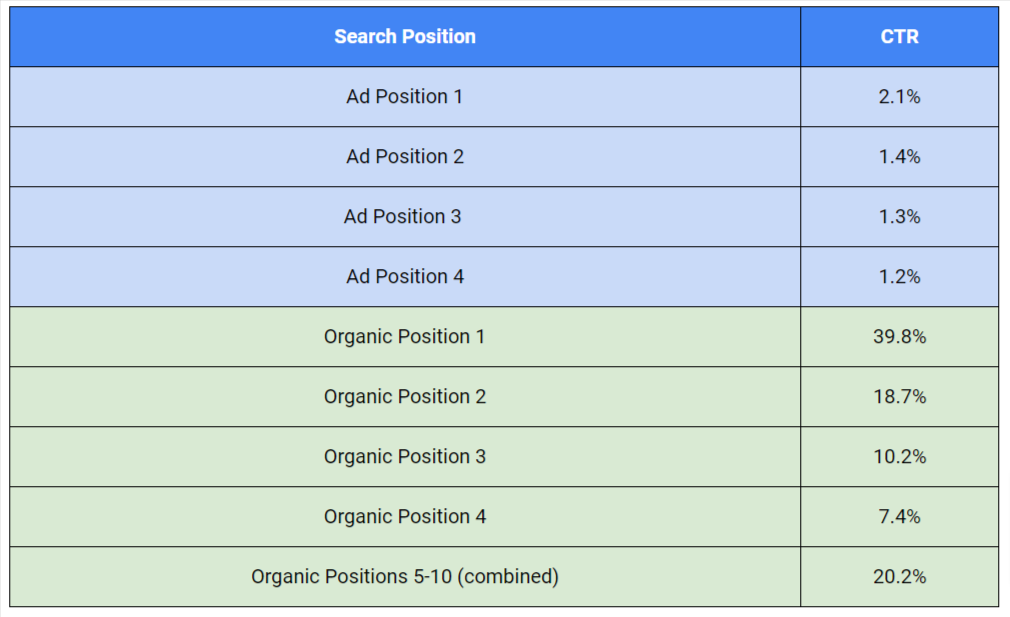
The CTR of PPC ads in most industry range between 4 and 5%.
It’s quite high in the case of SEO. When your business appears organically in search results, it’s because individuals actively searching for information related to your products or services have discovered your website.
These visitors have expressed a genuine interest by searching for relevant keywords or phrases related to what your business offers.
The beauty of SEO lies in its ability to attract visitors who are specifically looking for what your business provides. This targeted approach significantly increases the likelihood of visitors converting into customers or completing a specific call to action.
Increased ROI
Among all marketing channels, organic search is thought by almost half of marketers (49%) to offer the best return on investment (ROI).
Let’s take a financial advisor business as an example.
The business has a dedicated section on its website focused on retirement planning.
They invest in creating informative content regarding retirement planning strategies, tips, and services, and this content attracts a consistent traffic of 100 visitors to that specific webpage over time.
From these visitors, 6 individuals showed interest by filling out an inquiry form. Out of these inquiries, 2 individuals become clients, each committing to financial planning services valued at $10,000.
Revenue generated from these clients: $10,000 * 2 = $20,000
The cost incurred for creating and posting the retirement planning content on the website is $2,500.
Calculating the ROI without factoring in commission:
ROI: {($20,000 – $2,500) / $2,500} * 100 = 700%
Now let’s see how much ROI they get from paid marketing:
The revenue generated from these 2 clients remains the same: $10,000 * 2 = $20,000
The cost incurred for paid marketing to acquire 2 clients: $3,500
Calculating the ROI from paid marketing:
ROI: {($20,000 – $3,500) / $3,500} * 100 = 471.43%
Here’s the ROI right in front of you!
SEO ROI: 700%
Paid Marketing ROI: 471.43%
Small Businesses SEO Tips
Here are some of the most suitable tips to use for your Small Business SEO.
On-Page SEO Tips For Small Businesses
On-page SEO strategies include everything that goes directly on the website. It’s optimizing everything the user interacts with whether it’s the content, the URL or the images.
Align with search intent
Everything on a search engine starts with a search from the user. Google tries to understand the intention behind a particular search with its algorithms and presents a website that fulfills those intentions.
The question is how do you find the search intent of a keyword or phrase?
There are two ways. The first one is manually where you go to Google, type the keyword, and analyze the top-ranking websites.
In this method, you have to look for 3 Cs. The content type, content format, and content angle.
In the content type, find if the page is a product page, blog, landing page, etc.
Next try to understand whether the information is in a guide format, listicle, or review.
Finally, try to find out the unique perspective of each ranking website. For example, if the search query is “Pizza Recipe”, analyze whether the top-ranking websites have written about easy-to-make recipes, is it a guide or types of pizza?
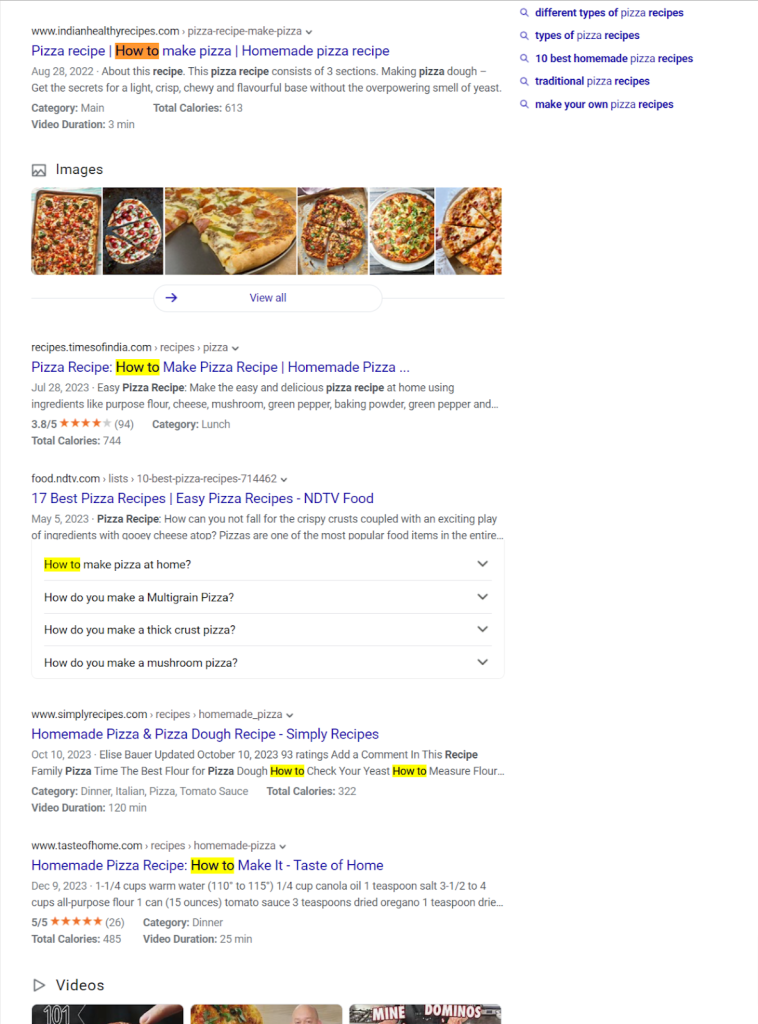
There’s another way to find search intent almost 10 times faster than the first one.
Yeah, with tools. Tools like Ahrefs, and SEMrush mention the intent behind each keyword directly.
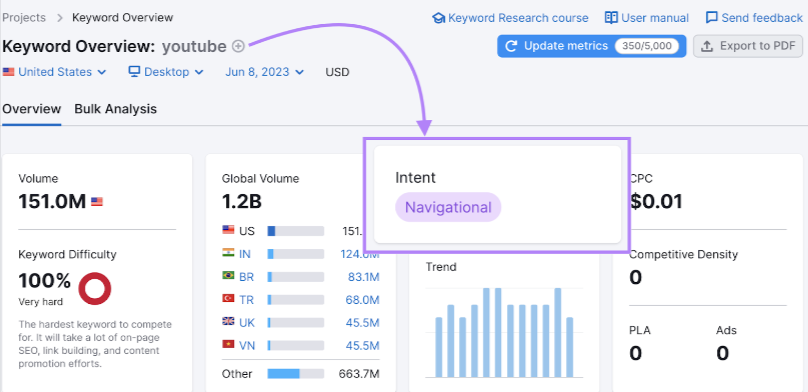
In a manual approach, you have to first find the keyword, and then analyze the intent to decide whether you should write content on that keyword or not.
But with tools, you can select keywords based on their search intent and other factors like volume of keyword difficulty.
Create a visual hierarchy:
Once you have masterpiece content in hand, the next important part of on-page SEO is formatting headings in hierarchical order.
This formatting signals Google the importance of each heading and distinguishes between topics and subtopics on a page.
Here’s a page without heading tag optimization:
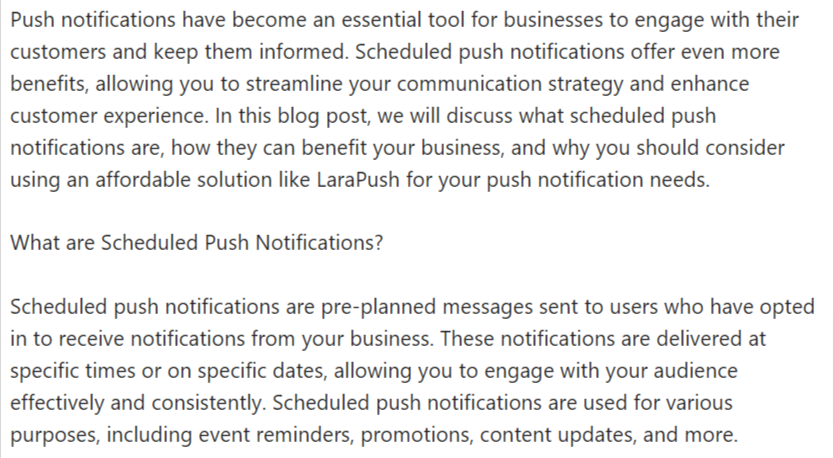
Here’s the same page optimized with proper heading tags:
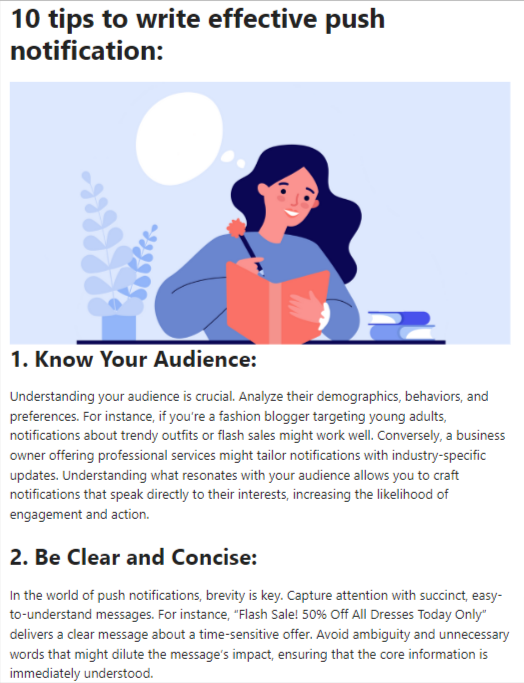
Although the changes are quite basic, the impact in both readability and visuals is significant isn’t it?
Here are some tips:
- Use one H1 per page.
- Maintain proper hierarchy like H2 under H1, H3 under H2, H4 under H3 , etc.
Set user-friendly URLs
The URL of your website plays a minor role in affecting the ranking on Google. Yet, if you want to be the #1 page there’s no way you should leave a stone unturned in optimization.
As for your URL, it’s always recommended to keep the URL simple and relevant.
Have a look at the URL of our recent post on, Japer AI review.
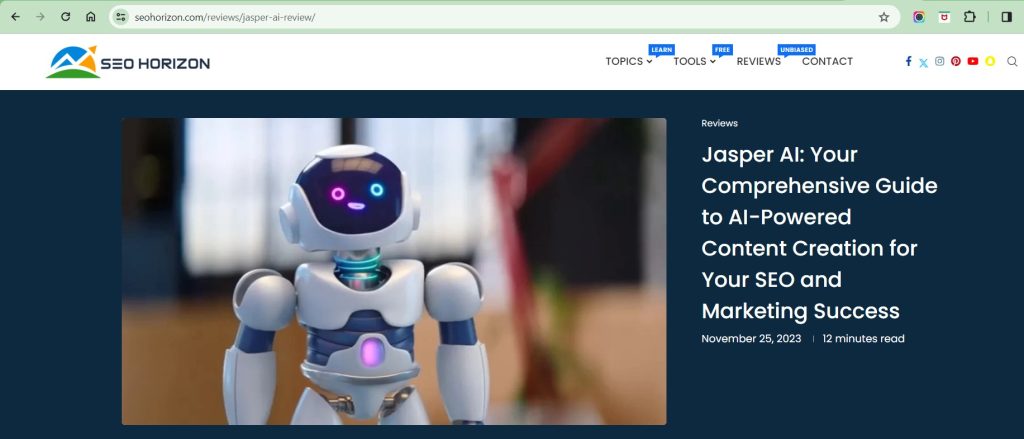
Clear, concise, and to the point.
Try including keywords or phrases from keywords on that particular page in the URL. This helps Google determine the relevancy of your site for a particular query.
How can businesses customize their URL?
Well simply by adding keywords inside the Slug part. Make sure you remove numbers, special characters and superfluous information from your URL.
Optimize your images
There are two reasons to optimize your images. First, they drive extra traffic to your website through image search. Secondly, a bad image can hamper the ranking of a page. It increases website load time and confuses Google with the context of images hindering your ranking.
The fact is image optimization is quite easy. It hardly takes 15-20 minutes to optimize images. Here’s what you have to do:
- Add descriptive filename:
Most of the images are saved as Img-34567.jpg or any random name. Uploading images with these naming formats provides zero context on what the image is about.
Let’s say you have content on “best tools to track your investment.”
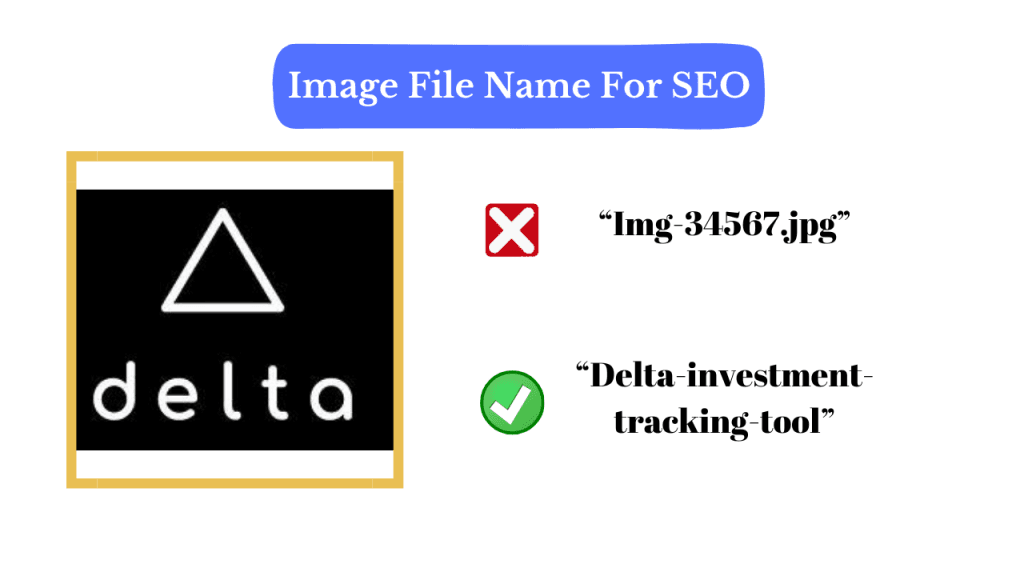
An image of a tool named “Img-34567.jpg” hardly says anything about the image. But if you name it as “Delta-investment-tracking-tool” it helps Google understand the overall content better.
Here are a few tips:
- Be descriptive.
- Don’t stuff with keywords.
- Add a dash between words.
- Always add alt tags:
Just like image file names, alt tags contribute to Google’s understanding of the context of images.
Before we go ahead what are alt tags?
The alt tag is an HTML attribute also known as an alternative text that is used with the HTML tag <img> describing the image.
It looks something like this:
<img src=”https://yourdomain.com/investment tools.jpg” alt=”the best investment tracking tool”>
Our advice for all tags remains the same as the file name. Be clear and considerate and no stuffing whatsoever.
Technical SEO Tips for Small Business
Technical SEO is the strategy that focuses on the technical infrastructure of your website. Unlike on-page and off-page SEOs that focus on content, technical SEO gives a boost to the technical factors affecting your site’s ranking.
Here are four ways to implement Technical SEO for small businesses:
Plan the Site Structure
A site’s structure defines how information is designed and presented on your site as well as how they are interconnected.
As a report suggests, almost 42% of people leave a site because of a poor or confusing structure and functionality.
A good website structure helps Google index your site easily and is user-friendly as well. Hence it is important to make the structure simple and logical.
There are several factors when combined together make the entire structure of a site. These include the links, schema, breadcrumbs, navigation, reviews, etc.
Small businesses can start with simple site structure optimization. You can add labels and metadata to each part of your page with various descriptives such as “navbar,” “footer” and “article.”
Improve Page Speed
A page speed measures the time taken to load the content of your website.
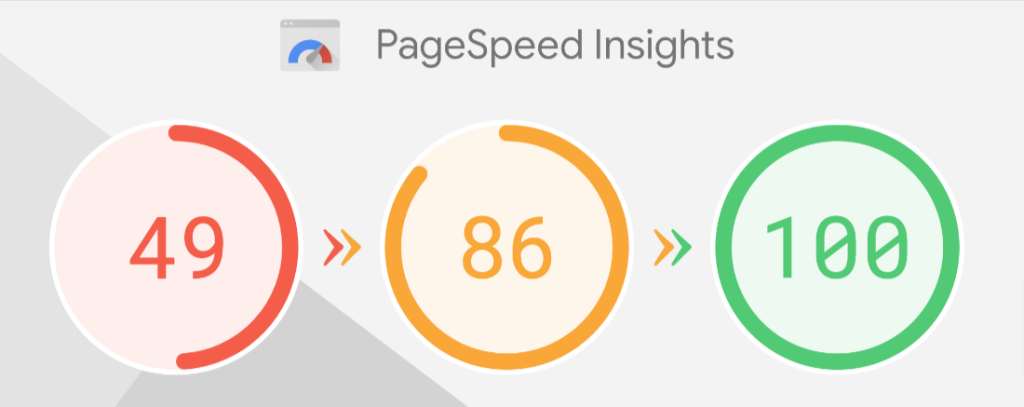
From the SEO point of view, it is an official ranking factor for search engines and Google Ads. Having a slow site will give a negative user experience that degrades the authenticity of your content and the overall impact of the small business.
The probability of bounce of that user almost triples if your page takes longer than three seconds to load, according to Google.
There are tools you can use to check your page loading speed such as Google PageSpeed Insights, Google Lighthouse, WebPage Test, GTmetrix , etc.
These tools will assign a score and point out the factors that are slowing down your website. Go through each factor, understand how impactful they are, and start fixing them.
Canonical tags
Technically a canonical tag is an HTML snippet that specifies the URL of a page on a website. In other words, a canonical tag allows you to specify the best version of content.
Let’s say you have three versions of the same content. Since these contents are similar, it gets difficult for Google to crawl through each of them and determine the best. Hence, when Google finds such pages, it doesn’t index those content.
To avoid these situations we use canonical tags in HTML that specify the best version of similar content. It directly instructs search engines to index that particular page.
Here’s what a canonical tag in an HTML snippet looks like:
<link rel=”canonical” href=”https://www.seohorizon.com/blog/”>
Off-Page SEO Tips for Small Business
Off-page SEO includes all SEO activities that happen outside of your website to improve your search engine rankings. This includes SEO Strategies like link building, content marketing, social media marketing, guest posts, podcasting, and video marketing.
Here are the most effective off-page SEO strategies for small businesses:
Building Backlinks
First thing first, your website, small or big cannot rank on Google without backlinks.
Recently, Backlinko analyzed 11.8 million Google searches to find that pages with more relevant backlinks rank above pages with fewer backlinks.
Not just that, the website’s ranking in the first position has an average of 3.8 times more links referring to its website than that of websites in between 2-10th positions.
As a small business, you don’t have to start paying to get backlinks. You can start small by approaching websites organically.
Note that the priority should be the quality of backlinks over quantity. Make sure you get backlinks only from relevant sites only.
Some of the common link-building strategies include replacing broken links, promotion of linkable assets, and link reclamation.
Investing in YouTube
YouTube content is one of the most popular ways to spike brand signals. Before we discuss this further, let’s understand what brand signals are.
Brand signals are a kind of super impactful yet underestimated off-page SEO strategy.
Google has come up with a new algorithm that uses brand signals
Brand Signals are additional indicators for Google to understand whether you are a legit brand or not. And what better way to figure it out than the number of people following your videos on YouTube?
Video content caters to a wide audience which means more people talking about your site.
With so many people viewing your content on YouTube at least 60% of them will search for your website online. So even if it’s not YouTube, make sure you have a social media site to give your website a kick on SERP.
Guest Posting
Guest posting is a part of link building, but we had to mention it separately. It’s because guest posting is one of the most authentic ways to get backlinks.
Not only that, it exposes your website in front of a completely different audience reaching out to new potential leads.
Here we will be discussing the right way to start guest posting and searching for guest blogging opportunities.
Start by searching the following on Google:
- “your target keyword” + “this is a guest post by”
- “your target keyword” + “this is a guest contribution”
- “your target keyword” + “guest post”
This will show you sites with at least one post written by a guest author.
Let’s say you want to write a post on baking recipes. Search for “easy baking recipe +this is a guest post by” or “easy baking recipe +this is a guest contribution.”
Here’s what you will get:
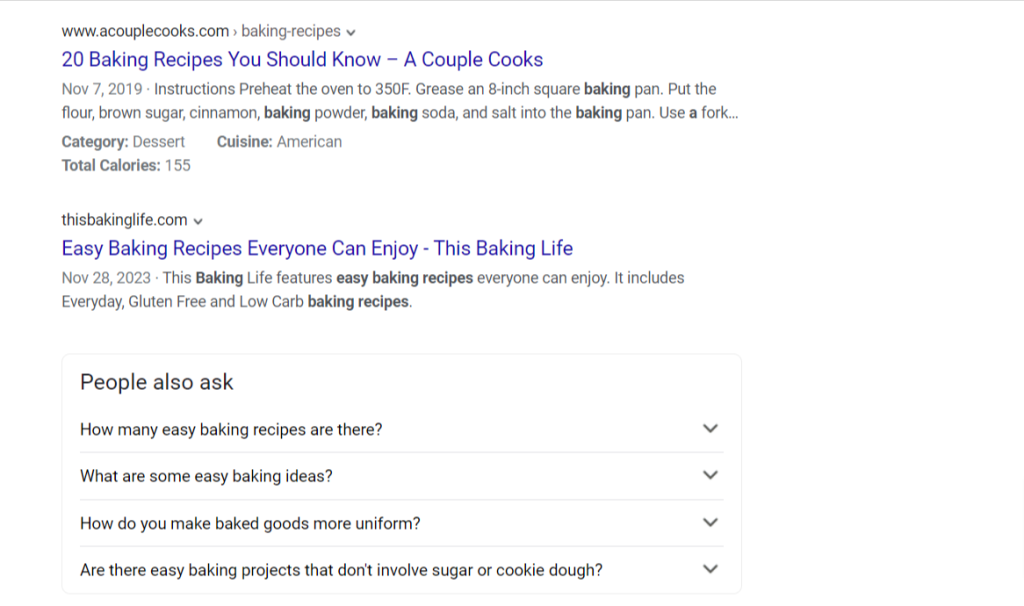
From this, you will find sites with guest posts relevant to your niche.
After gathering 10-20 sites, check their domain authority, site health, and content quality. If you find any site worth posting on, reach out to these sites.
Find out if they are accepting guest blogs. If they are, what are their criteria and editorial policies?
That’s it, you can share the content and wait for the website to publish it. Do remember to track your guest posts and analyze the traffic you get from them.
Forum Posting
After guest posting the next best link-building platform is forums. Forums are discussion platforms where you can open a discussion, publish content, and respond to other posts.
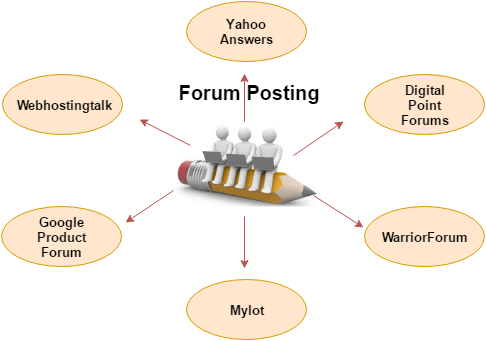
Why is it a good off-page SEO strategy?
The first obvious thing is it will provide you with decent backlinks.
The better reason is, that you can start a discussion on less known topics and educate your audience directly who aren’t even searching for your product or services.
For example, if you are a fitness coach engaging in forums discussing general wellness. While some users might not be explicitly searching for a fitness coach, they’re interested in health-related discussions.
By providing valuable insights, answering queries, and subtly introducing your expertise, you’re educating an audience that may not have initially sought your services.
The question is, how do you find forums for your industry?
Google always comes to your rescue. Simply type forums after the keyword related to your niche. The results will amaze you.
Another way to find forums is to spy on your competitors. Visit your competitor’s websites and find the forums they are linking to.
Here are a few tips while posting on the forum:
- First thing first, make sure your responses contain useful information that benefits readers.
- Avoid using your website URL directly in forum posts to drive traffic. Instead, add contextual links.
- Don’t sound promotional content as people run from posts that advertise too much.
- Do thorough research before engaging in forum discussions to provide accurate and helpful information.
- Refrain from publishing insulting or personal remarks to maintain a respectful and conducive forum environment.
Local SEO Tips
Optimize Your Google My Business (GMB) Listing
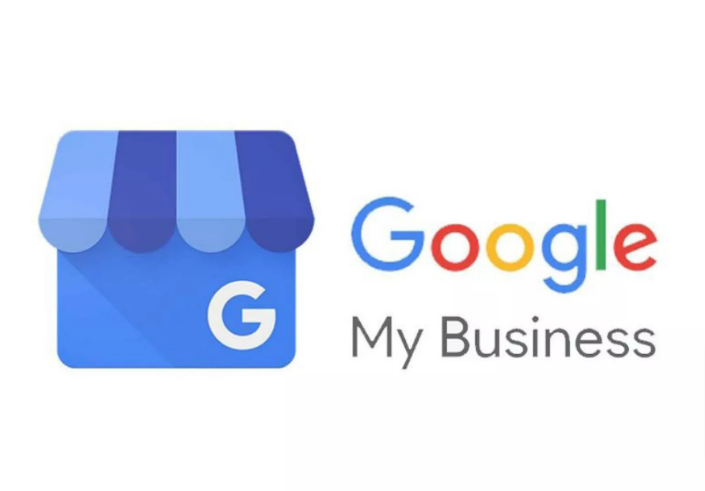
Stepping into Local SEO without Google My Business is like driving to a new location without a map or GPS.
It’s a must-have. But before we get into why and how you can use Google My Business, let’s have a fair understanding of what it is.
It’s an online business listing by Google which allows companies to showcase their business information on Google. Listing your business on Google My business is completely free of cost.
You can include information like address, phone number, opening and closing hours, images of your businesses, etc.
Once you list your website and follow proper SEO strategy your business will appear in local search results for queries looking for similar services.
You might be wondering how impactful it can appear on a search query.
Well, let’s say your business specializes in bakery.
Here are some pro tips to optimize your Google My Business:
- Accurately list business hours, including weekends and holidays, to enhance accessibility.
- Incorporate brand-relevant features like outdoor seating or happy hours to reflect your business identity.
- Upload visually engaging photos and videos to foster audience connection and improve rankings.
- Encourage customer reviews by offering incentives like discounts or complimentary items.
- Respond to both positive and negative reviews to build trust and improve Google My Business (GMB) ranking.
Ensure your NAP is consistent
Contradictory information confuses your customers. Most businesses online have multiple phone numbers and addresses. It’s difficult to find out the actual address or phone number that’s working. This not only impacts SEO but also reduces your customer’s trust.
Hence, maintain a consistent Business Name, Address, and Phone number (NAP) across all platforms. Search engines reward accurate NAP data with higher rankings, signifying reliability. It’s a trust signal for customers too, ensuring they encounter consistent and dependable information about your business, fostering credibility.
To maintain a consistent NAP, triple-check all details before submitting them to any directory. In case there are information changes do not forget to update any changes in NAP across platforms.
You should audit directories every now and then to ensure that your social media profile information is consistent.
Local Keyword Research
Local keyword research involves identifying and targeting specific keywords or phrases that are relevant to a particular location. The aim here is to include keywords in your website so that local customers can find you online.
By location-specific keywords we mean keywords with terms like city, neighborhood, or region names, etc.
What are the best practices?
- Always understand the intent behind any search. Analyze what local customers are searching for and their specific intent behind it. Use tools like Google Trends, Google Keyword Planner, or local SEO platforms to identify popular local search terms.
- Integrate location-based keywords naturally within website content, meta descriptions, titles, and tags. This helps search engines associate the business with the targeted location.
- Target long-tail keywords that include specific services or products offered along with the location. These keywords often have less competition and can attract highly relevant local traffic.
Dedicate a web page to each of your locations
Local SEO is not just for businesses with one location. And, if you own stores in multiple locations, you should dedicate a webpage to each of them.
One of the biggest misconceptions we have come across on local SEO is that people believe it is only for one particular location.
That’s not true! Businesses can rank for multiple locations if they operate in more than one location.
For example, let’s say you offer real estate brokerage services in both Miami and Florida.
You can rank for both locations. The best way to do so?
Dedicate a webpage for each location. A dedicated webpage for each location will help Google promote your website to a wider audience.
This will provide search engines with more opportunities to promote your business to the people that you serve.
Here are some tips to optimize your Google My Business account:
- Create Separate GMB Listings: Generate distinct GMB listings for each location of your real estate brokerage services.
- Accurate Business Information: Ensure each GMB listing contains accurate and consistent information, including the business name, address, phone number (NAP), and website URL specific to that location.
- Geotagging Images: Upload location-specific photos to each GMB listing and include geotags to reinforce the association with the respective areas.
- Localized Content: Craft unique and localized content for each dedicated webpage. Include information about the neighborhoods, market trends, local events, and specific real estate offerings in each area.
Encourage Customer Reviews and Feedback
Let’s say you are planning to travel. Which travel agency would you choose:
One that has awesome services but 3-4 positive ratings or the one with ratings or reviews in the hundreds?

Obviously the second one right?
That’s how your customer’s physiology works. They will prefer businesses with better and more ratings than the ones with awesome services but few ratings.
As per recent research, almost 81% of customers read online reviews before purchasing a product or opting for a service.
Customer reviews can make or break your business. It’s as simple as that. Today the internet has authorised complete power to customers so that they can share whether or not a company lives up to its claims.
The question is what are the ways to get reviewed by customers?
- Ask Personally: After providing a service, personally ask satisfied customers to leave a review.
- Make It Easy: Provide direct links or clear instructions on how to leave a review on platforms like Google, Yelp, or industry-specific review sites. Simplify the process for customers by guiding them step-by-step.
- Email Follow-Ups: Send a follow-up email thanking customers for their business and kindly request a review. Include clickable review links in the email for easy access.
- Incentivize Reviews (Ethically): Offer a small incentive or discount for leaving a review. However, ensure that the incentive doesn’t violate the policies of review platforms. Avoid buying or incentivizing for positive reviews, as this could lead to penalties and loss of credibility.
Mistakes you must avoid as a Small Business Owner
There are thousands of websites handing out tips and tricks on SEO. Not just that, but the marketers you consult, and the help you seek, each and every one has different tips for newbies.
It’s common to get lost in the sea of suggestions. However, while keeping with the pace of SEO in creating new websites, you must avoid these 5 mistakes at all costs.
Misunderstanding SEO as Free
Even today, marketers and agencies will try to convince you and lure you in by simply trying to prove that SEO is free.
Although Google or other search engines do not charge for putting out content on your website, there are investments we cannot overlook. These investments include time, resources, and the cost of hiring a team for SEO, paying for tools, etc.
Rather than considering SEO as free or cheap, you must understand that SEO offers higher ROI than any form of marketing. According to a survey by Search Engine Journal, 48.7% of marketers agree that SEO offers the best ROI.
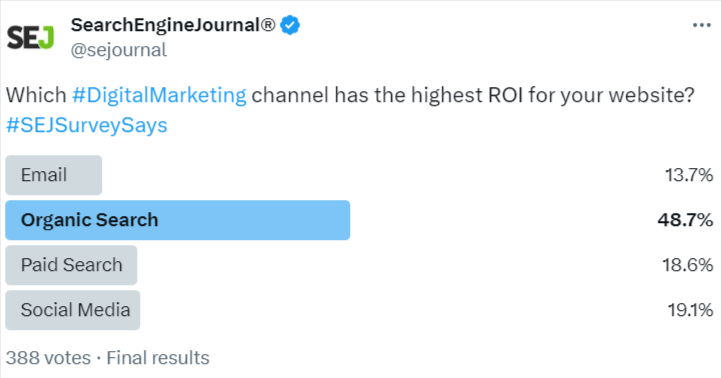
In SEO, the return on investment grows slowly and continuously. In the long run, SEO outruns PPC and other forms of paid marketing.
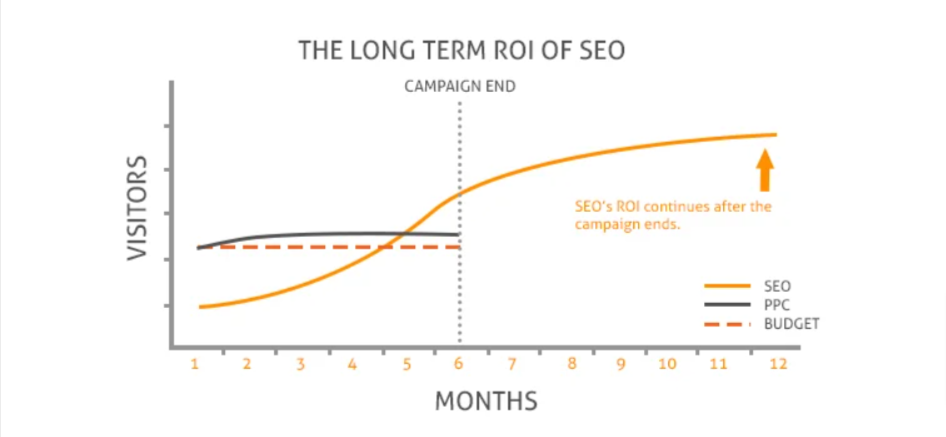
This means, after 3-4 months of continuous efforts you can significantly grow your revenue.
Hacks and Shortcuts
We get it. SEO takes time and constant effort to brew results. Sometimes it can be tempting to go with hacks and shortcuts.
However, if you are planning to grow your business in the long run, you must be extremely careful of the hacks you use. Because most of them have some or the other downfall and they backfire.
Over the past few years, Google has penalized thousands of websites. According to a report, Google has penalized sites at a rate of approximately 1/12th every month.
Not just that, the same report suggests that only 30% or fewer websites that are penalized regain their ranking on Google.
Now you know the impact simple easy hacks like buying links or keyword stuffing can have on your business.
The question is, how do you understand which hacks are good and which ones you should stay away from?
Well, the best way to understand is to go through Google’s guidelines for penalties.
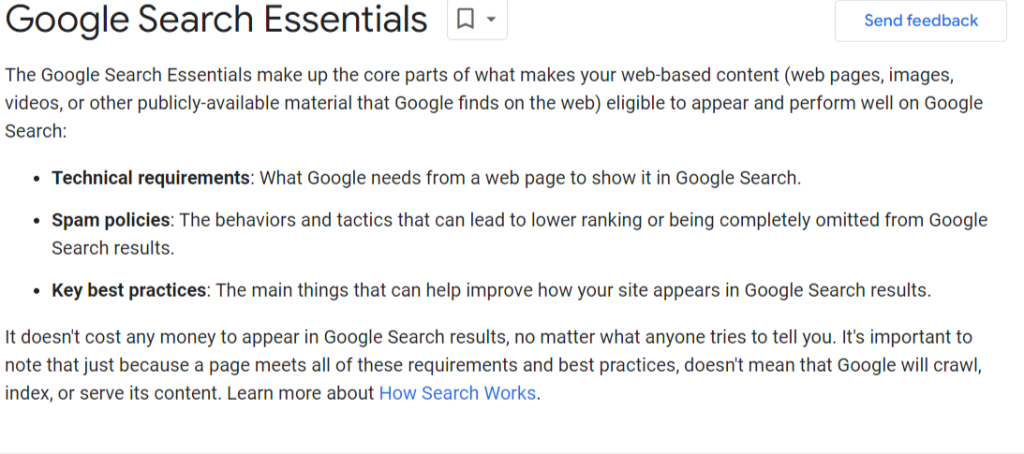
Any hack that goes against this policy is a big no. Always prioritize aspects highlighted by Google, such as loading times and mobile optimization.
And of course, create the best content possible. That beats each and every hack!
Building unnatural links
As we mentioned earlier, links are the most important ranking factor in Google. Sadly they are also the reason most websites get penalised by Google.
As a small business having a new website, you may not have enough links and that can make you anxious. Especially when you search for your competitor’s link profile and find thousands of backlinks.
Happens.
However, don’t let these compel you to practice unethical link-building strategies. The current links preferred by Google are simple. The more your website has do-follow links, the better.
Always prioritize the quality of backlinks over quantity. Before trying to get backlinks from a site, monitor the website’s link profile using tools like UberSuggest, Ahref, or Google Search Console. Here’s a glimpse of what a backlink profile looks like on UberSuggest:
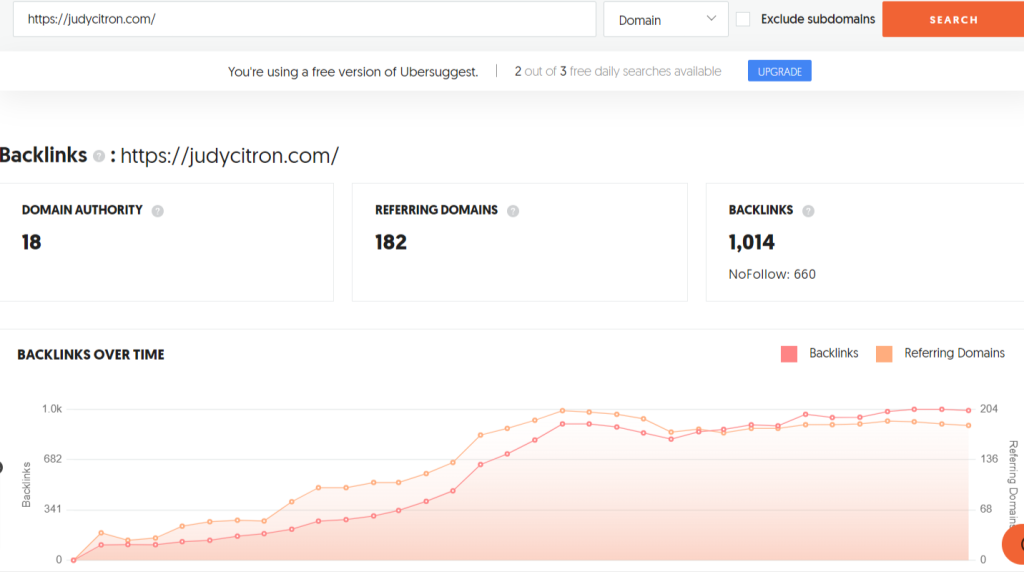
More importantly, get backlinks from websites that are relevant to your niche. Because let’s say you are a small business in eco-friendly products. Receiving backlinks from environmental blogs, sustainability-focused websites, or organizations promoting green initiatives holds much more value than links from unrelated sources like gaming forums or beauty blogs.
You can get authentic backlinks by:
- Networking with bloggers
- Guest posting on websites relevant to your niche
- Running events that gain the spotlight
- Analyzing your competitors’ backlink profiles
Keyword Stuffing
There was a time when writing anything and over-optimizing with keywords used to get websites to the top. Soon google figured out most of the websites running had average or poor quality content yet were getting ranking due to stuffing.
Since then the algorithm has changed a lot. Google can easily figure out whether or not a website is stuffed with keywords. Hence, if you are hiring a freelancer or agency who writes average content and stuff keywords promising you ranking, it’s time to run.
You might not have the skill to write and present content properly, but since it’s your business no one knows better than you whether a piece of content written provides value to your audience or not.
Always give your content a thorough read before publishing it on your website.
Aesthetics vs. User Experience
You need to create and design your website in a way that would fit all the versions of websites including the desktop, mobile, and tablet.
Your website’s primary focus should be based on your small business growth. And for that, you need to provide authentic website usability to the users.
Create a way that would transform the readers from visitors into paying customers. Thus, distracting them with fascinating graphics is just useless.
CTA or Call To Action
Since you are a small business you should have a purpose to sell something. In the online platform, your website needs to act as a business card to articulate what exactly you are expecting a reader to do after they have gone through your content.
If you are not adding a place for a clear Call To Action, you are putting an end to that reader’s journey right after they have read the blog or content as they find no place to take the next action.
Therefore, to make the visitors your valuable customers and increase your small business sales, a CTA is a must to include on your website or portfolio.
The Best SEO Tools for Small Businesses
By now, you know exactly why and how you should focus on small business SEO specifically. The last and final step is to find the perfect tool that assists you with each optimization process.
If there’s one thing we have observed over the years, it’s that finding one good tool that suits all your requirements is almost impossible. Different tools are good for one or two specific purposes.
For example, if you are in the competitor analysis phase tools like SpyFu will serve the best. On the other hand, for keyword research, you can go with tools like Ahref, Google Keyword Planner, Ubersuggest, etc.
Here is the list of all the tools for small businesses SEO:
1. Google Analytics
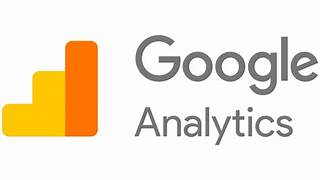
This is a free yet most common tool that you can use to monitor your website’s performance. It helps in tracking all the reports of the traffic that your website will generate.
2. Ubersuggest
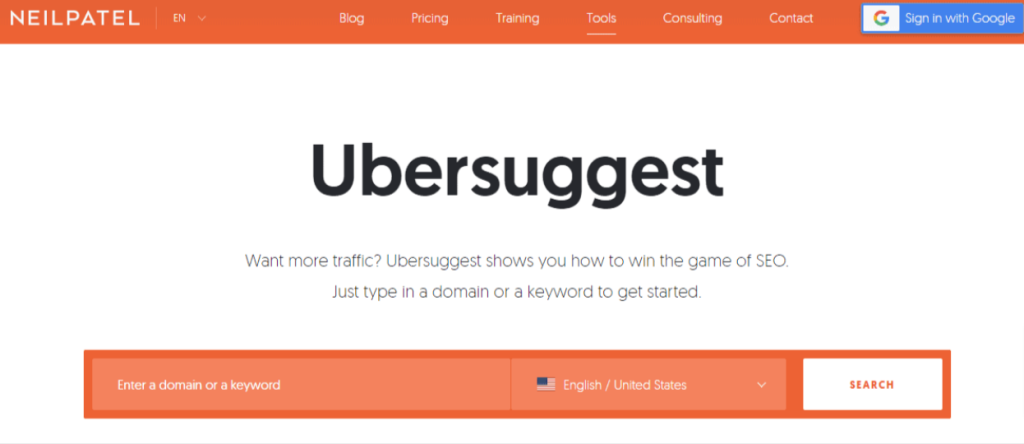
UberSuggest has a range of features including keyword research, keyword gap analysis, backlink analysis, traffic analysis, etc. Small businesses do not need in-depth technical details of every metric presented in tools like Semrush and Ahref. Hence, tools like UberSugest are life savers. They offer almost similar features at a very low cost.
3. Google Search Console
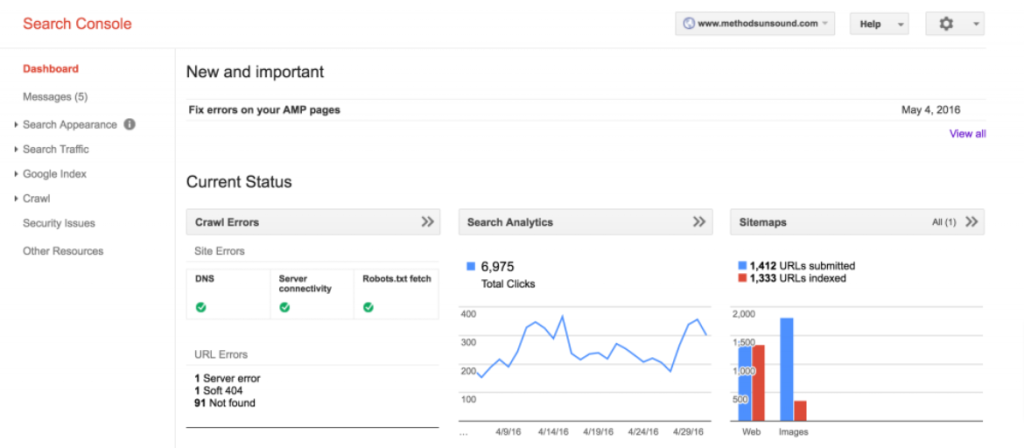
To maintain and monitor your website visibility on the search engine results, you can use this tool. It will help in providing you with an insight into how Google works and indexes your website.
4. Google Trends
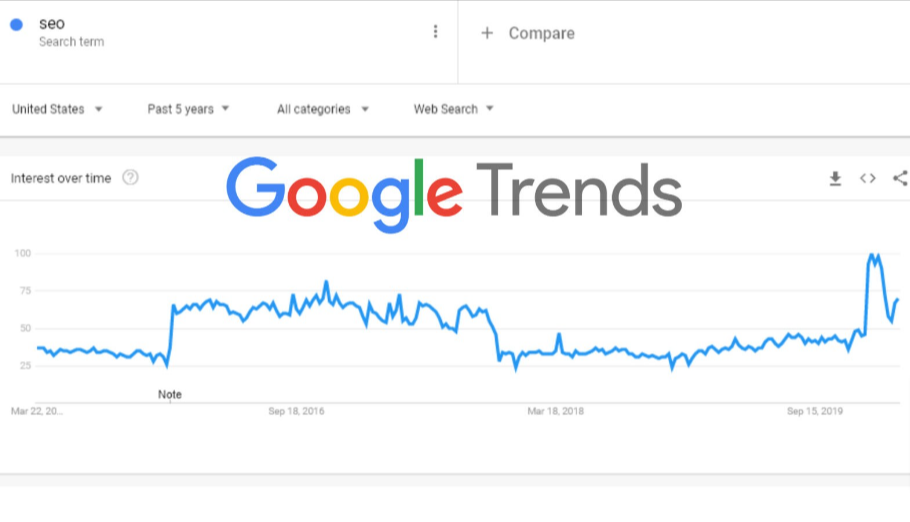
This is another free tool for your small business to compare different topics that let you stay updated about the latest trends in your industry.
If you are a new small business website then you would want to make a relevant presence of your website on the online presence therefore this tool can be helpful for you with providing ideas to generate content and pitch to other websites.
5. Screaming Frog
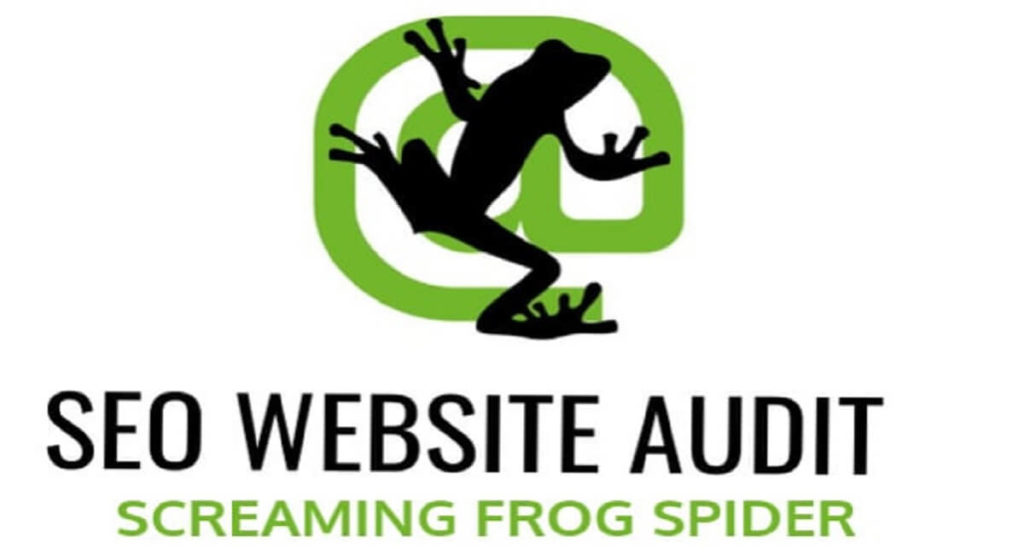
To get complete audit details of the webpages for your site, Screaming Frog can be the best tool to conduct technical auditing for all the SEO aspects on your websites.
Conclusion
This information might be overwhelming but trust us, it’s not that difficult. Small business SEO is cost-effective and helps you appear in the same SERPs as your competitors. You just need to follow the right steps to attract potential customers and visibility of your site to scale your business.